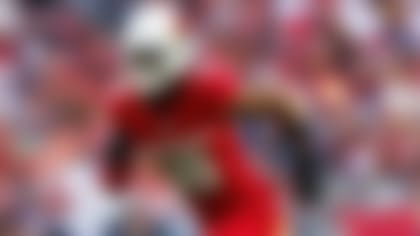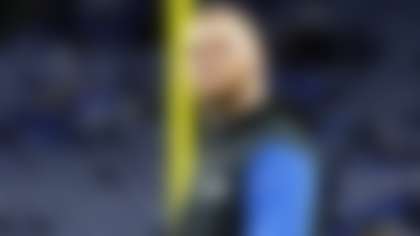Note: The following is an excerpt from a forthcoming book, "THE LITTLE LEAGUE THAT COULD: How the AFL changed the NFL forever." The book will be published by Rowman-Littlefield and is due out in 2010.
By the end of 1965, the AFL had its sugar daddy in NBC (to the tune of $36 million, not including addition money for playoffs). It had stars both established (Lance Alworth, Jack Kemp, Nick Buoniconti) and emerging (Joe Namath, Buck Buchanan, Willie Brown). It rapidly was gaining acceptance from the public.
Now, the AFL needed a merger.
Or did it?
There was a strong belief among some league members that it could win a protracted battle with the NFL over talent and eventually force the hand of NFL commissioner Pete Rozelle. Oakland's Al Davis, for one, thought the AFL could survive and prosper, and down a longer road, any merger would feature settlement terms quite favorable to his league.
"I was just trying to lead them in the right direction to get what they wanted," Davis said, recalling when he served as AFL commissioner in 1966, just before serious merger talks began. "I didn't necessarily want a merger, but they wanted it. And they got it.
"I'll tell you this, we were sitting in (Jets owner) Sonny Werblin's house, the owners, we were having a meeting. We didn't know if the National Football League was on the level or joking.
"But I'll never forget one of the owners saying, 'If they're lying to us, we'll have to drop the bomb on them.' We would drop the bomb and sign all of their players."
Werblin even was outmaneuvering the Giants for some New York fans, so why did he need to pay his way into the big time?
The AFL was doing well enough in the competition for draft picks and veterans that powerful men such as Davis and Werblin could have been quite persuasive. But for all the strides Werblin was making, and for all the popularity of some of the other franchises in their home bases -- San Diego, Kansas City and Houston were about to get new, substantially upgraded stadiums, which New York already had -- it remained clear that the NFL still had the upper hand in most every way.
More TV money. Deep-pocketed owners in nearly every city. Tradition.
"The merger was not needed on our side (at that time), it was desired," said Art Modell, then owner of the Browns, one of the NFL's premier franchises. ``We could have done our business for another 30 years. We sought it out to prolong the success of pro football before things got out of hand and we couldn't control them. But there was some animosity.
"We competed for players, boy did we," Modell added, laughing at the memories. "Yeah, everybody was hiding players -- the Chiefs had Buck Buchanan, and he was no small fry, he was pretty difficult to hide. That was something we had to put an end to quickly."
So the AFL and NFL consented to begin merger talks, even as the two leagues were ravaging each other with escalating pricetags on players.
Actually, informal talks had begun long before things got serious in '65 and '66. They even involved the likes of Werblin, despite his insistence that New York could be a two-team football town.
But when the NFL demanded $50 million in indemnity payments by the AFL before a merger could occur, things looked bleak.
The enmity then flew into the stratosphere when Buffalo placekicker Pete Gogolak, the first significant soccer-style kicker in pro ball, played out his contract with the Bills and signed with the Giants -- even though both sides had a tacit agreement not to touch players in Gogolak's position.
"That nearly destroyed the merger talks," said Cowboys GM Tex Schramm. "What (Giants owner) Wellington Mara did was completely legal, but it also was a big thorn in any negotiations. It caused so much animosity that even some of the owners who had been most eager and cooperative about a merger -- such as Ralph (Wilson) -- turned the other way.
"We'd had some, I wouldn't call them fruitful talks, but some positive discussions, and the Gogolak thing ended those pretty quickly for awhile."
The AFL responded by signing key NFL stars to futures contracts. The AFL had put together a war chest for just such an occasion, and Davis made sure they targeted the quarterbacks. Los Angeles Rams QB Roman Gabriel signed a contract that would begin in 1967 and immediately received a $100,000 bonus. Fran Tarkenton and Sonny Jurgensen, future Hall of Famers, were approached. So were solid NFL passers such as John Brodie and Milt Plum.
By this point, leaders on both sides -- Davis withstanding, perhaps -- were sensing the senselessness of it all. The AFL was not about to fold. None of its franchises, not even the financially strapped ones in Boston or Denver, was about to disappear. In fact, the league was about to grow, with an expansion team in Miami beginning play in 1966.
Merger talks intensified, although they often were held in secret. On June 8, 1966, the AFL and NFL announced a merger, with a common schedule to begin in 1970. A common draft would begin in 1967, and the AFL champions would play the NFL winners for the overall title beginning in January 1967.
Rozelle remained as NFL commissioner and Davis rejoined Raiders.
"The success of that merger was first affected by Tex Schramm on our side and several of those men on the AFL's side: Ralph Wilson, Lamar Hunt," Modell said. "I never thought we would get that far, actually. There was some tremendous opposition on our side against the AFL; I didn't share those feelings. I thought they were a good league and had good names among players, coaches and owners. They were well-coached teams. I believed it would be nice to get together and merge for the good of pro football."
For the good of pro football.



